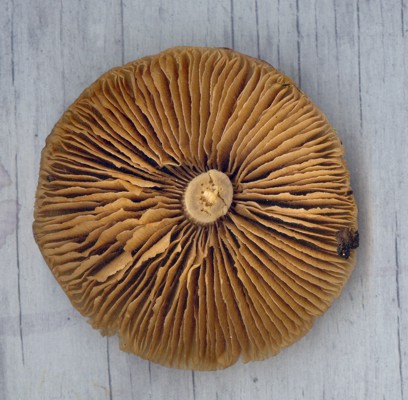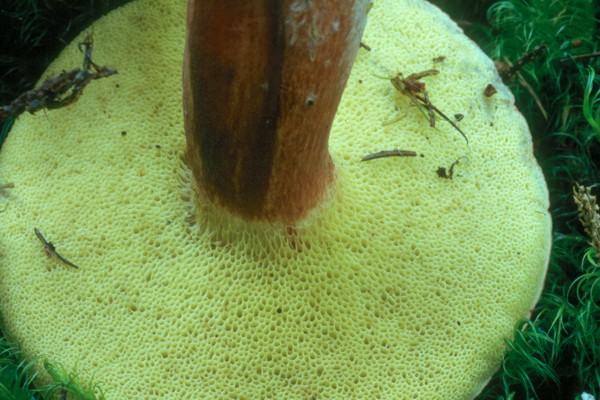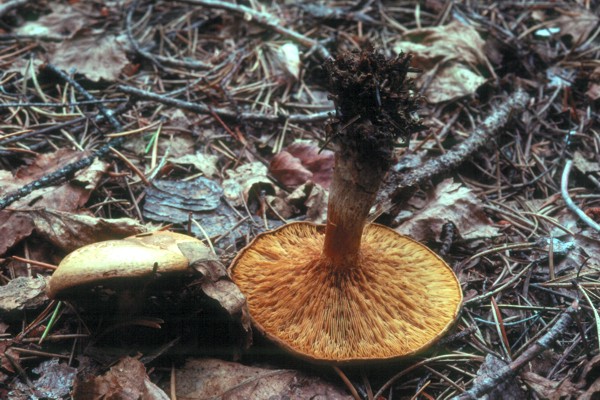DISCUSSION OF MUSHROOMS AND BOLETES


Mushrooms and boletes are nearly all soft and easily-decayed fungi. The obvious difference between them is seen when you turn them upside down; mushrooms have lamellae (gills) and boletes have tubes or pores.
 Although they are quite distinct in their lineage and are assigned to different orders, Agaricales and Boletales, they are remarkably alike. Scientists who study one group usually study the other. There are structurally intermediate forms, and even some that may appear to have been assigned to the wrong group. For example, Paxillus involutus in the photo at left has lamellae and looks like a very typical mushroom but is known from genetic evidence to be a member of the Boletales. Such examples can shake a beginner's confidence in ever learning to recognize the major groups of fungi in the field, but fortunately these are rare. Most Agaricales look like mushrooms and most Boletales look like boletes. And P. involutus? Well, most people acknowledge it as a bolete while secretly considering it a mushroom.
Although they are quite distinct in their lineage and are assigned to different orders, Agaricales and Boletales, they are remarkably alike. Scientists who study one group usually study the other. There are structurally intermediate forms, and even some that may appear to have been assigned to the wrong group. For example, Paxillus involutus in the photo at left has lamellae and looks like a very typical mushroom but is known from genetic evidence to be a member of the Boletales. Such examples can shake a beginner's confidence in ever learning to recognize the major groups of fungi in the field, but fortunately these are rare. Most Agaricales look like mushrooms and most Boletales look like boletes. And P. involutus? Well, most people acknowledge it as a bolete while secretly considering it a mushroom.
|
MUSHROOM MUSIC By the way, have you ever heard of mushroom music? You may be surprised to learn that the Finnish composer Herbert Lindholm has written a composition for flute and piano entitled Fauni dei Funghi. It is divided into four parts: Faunus Boletus, Faunus Amanita, Faunus Cantharellus and Faunus Gyromitra. You can visit Herbert Lindholm's website and listen to mp3 files of these delightful pieces. If you can play the flute or piano you may also wish to print out the music. Highly recommended! |
Mushrooms that look like boletes and boletes that look like mushrooms are only the tip of the iceberg. Members of both of these orders have also taken on quite different forms and appear to us as puffballs, club and coral fungi, tooth fungi and even corticioid fungi, all Agaricomycotina presented in separate places on these web pages. Many of these connections are less obvious than the one between mushrooms and boletes and can only be discovered and resolved with the aid of DNA sequences.